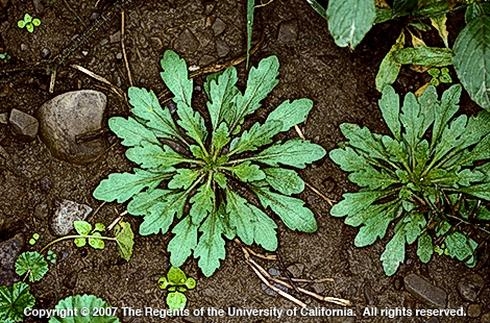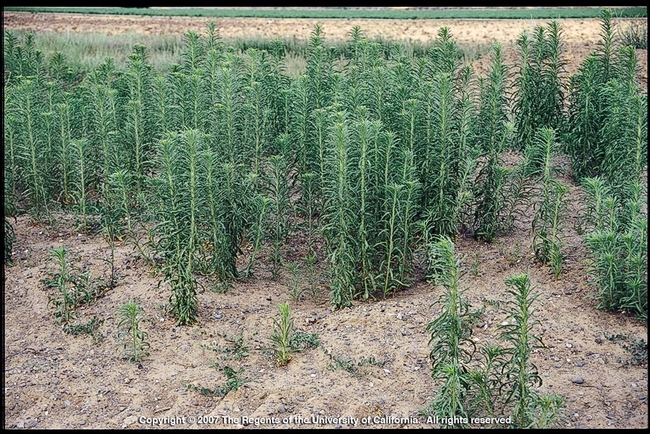Researchers have now confirmed that six glyphosate-resistant weed species have been identified in California. Four have been known to exist for some time; they are horseweed (marestail, Conyza sp.), hairy fleabane, rigid ryegrass and annual ryegrass. To that list, junglerice and Palmer amaranth in the Central Valley have been recently added to the list. Additional weeds that have become more of a challenge to control and are on the suspect list are goosegrass and, in the central San Joaquin Valley, the summer grasses sprangletop and witchgrass.
There have never been a lot of herbicides registered for avocado, largely because once they are mature, they self-mulch with their leaves. It's really young orchards that have a weed problem. Growers for the most part have not used pre-emergent herbicides and relied on the many glyphosate products that originally started with Roundup. Sethoxydim (Poast) is registered for non-bearing orchards, but then what can be used as post-emergence herbicides when there is still large open spaces between trees when they are young and bearing? There are still some formulations of paraguat and diquat available for use on avocado, but horseweed is also showing resistance to these materials. Paraquat is also a restricted use material so limits who can apply it. That leaves some of the pre-emergents, such as norfluazon (Solicam), oxyfluorfen (Goal), oryzalen (Surgflan) and simazine (Pricep). These all require water to activate them, and in years with low rainfall efficacy can be erratic.
From a postemergence standpoint for glyphosate-resistant horseweed the options are pretty slim in avocado.
-
Paraquat is registered and likely to be pretty effective but has regulatory and safety baggage.
-
Diquat is registered in nonbearing orchards and likely to be effective.
-
Carfentrazone is registered but not very effective on Conyza.
Oxyfluorfen will help glyphosate performance to some extent on Conzya, but not likely to be fully satisfactory.
From a preemergence standpoint:
-
Simazine should be really effective on Conzya. It would have groundwater and runoff concerns in some areas.
-
A combination of oxyfluorfen plus pendimethalin or oryzalin would probably be the best available bet for broad spectrum PRE control with decent crop safety.
-
Isoxaben is registered on non-bearing avocado with reasonable Conzya control and good crop safety
Flumioxazin has a non-bearing label and should be pretty good on Conzya.
There has always been concern about the effect on shallow rooted avocado using pre-emergents. This has not been documented, but based on grower experience.
There have never been a lot of herbicides registered for avocado, largely because once they are mature, they self-mulch with their leaves. It's really young orchards that have a weed problem. Growers for the most part have not used pre-emergent herbicides and relied on the many glyphosate products that originally started with Roundup. Sethoxydim (Poast) is registered for non-bearing orchards, but then what can be used as post-emergence herbicides when there is still large open spaces between trees when they are young and bearing? There are still some formulations of paraguat and diquat available for use on avocado, but horseweed is also showing resistance to these materials. Paraquat is also a restricted use material so limits who can apply it. That leaves some of the pre-emergents, such as norfluazon (Solicam), oxyfluorfen (Goal), oryzalen (Surgflan) and simazine (Pricep). These all require water to activate them, and in years with low rainfall efficacy can be erratic.
We are currently working on getting registration the post-emergence herbicide glufosinate (Rely) registered for avocado. It's used extensively in other tree crops with success to control many weeds including the Conyza weeds. The registration is being sought through the IR-4 Project (Interregional Research Project Number 4) since 1963 has been the major resource for supplying pest management tools for specialty crop growers by developing research data to support new EPA tolerances and labeled product uses.
Photos of young and maturing Conyza
Attached Images:

